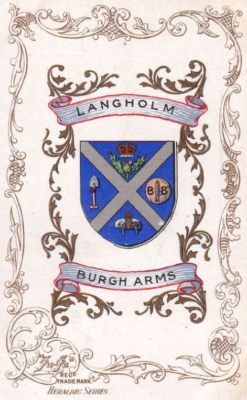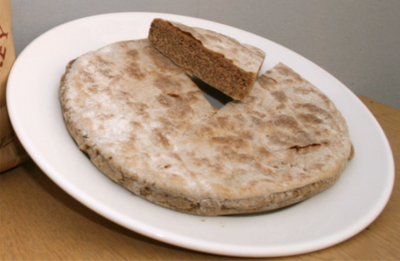Langholm was made (or more formally was ‘erected into’) a burgh of barony in 1621 by King James VI who gave it and other properties to Robert Maxwell, 1st Earl of Nithsdale. Maxwell’s seat was Caerlaverock Castle, about 30 miles southwest of Langholm.
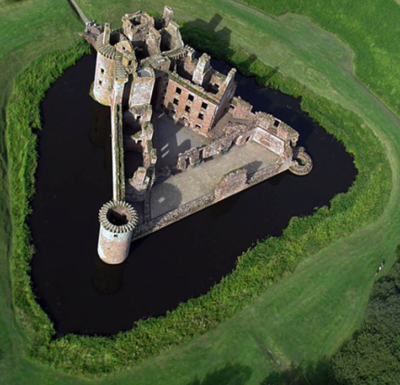
By 1845, the barony had passed to William, 6th Duke of Buccleuch by a complicated route and had become a police burgh, giving it various statutory powers. Langholm used the term ‘town council’ for its governing body and designed a seal for itself in 1893, based mostly on Common Riding symbols.
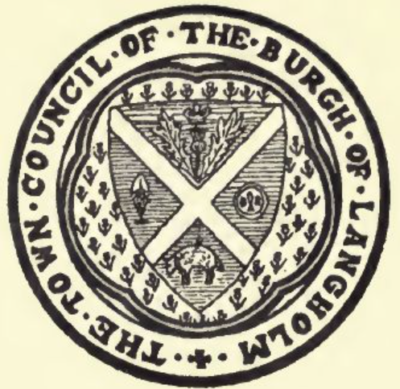
A description at the time stated:
The articles represented on the shield are, with the exception of the sheep or fleece at the bottom, identified with the annual festival of riding the marches at Langholm. On the top quarter is a thistle, in the centre of which is a crown, this crown being composed of flowers, and carried in procession at the Common Riding. On the side quarters are a heather bedecked spade (with which a sod or two is cut each year), and a barley-bannock with a salt herring nailed across it, and with the letters B.B. on it. This is a representation of the fare with which the natives used to regale themselves, and such a bannock is carried in procession at the Common Riding. The sheep or fleece is representative of the woollen trade, which is the staple trade of the town.
The arms within the seal were included in a 1903 publication entitled The Arms of the Baronial and Police Burghs of Scotland.
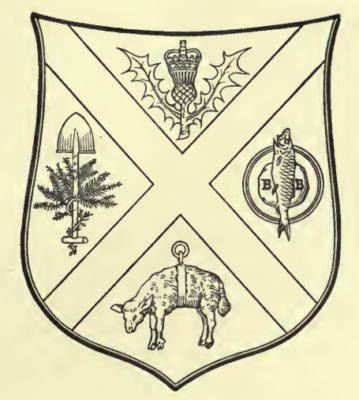
The publication gave a description in heraldic language:
Azure, a saltire argent; between — in chief, a thistle slipped proper, imperially crowned or; on the dexter, a spade in pale, blade upwards, wreathed with heather proper; on the sinister, a wooden platter surmounted of a barley-meal bannock, surmounted in turn of a salt herring paleways, and marked with the letter B on each side of the herring; and in base a toison (or golden fleece) or.
- Argent: silver
- Azure: blue
- Dexter: right-hand side, looking towards an observer, i.e. on the left of the coat of arms
- In base: at the bottom
- In chief: at the top
- Or: gold
- Pale, paleways: vertical
- Proper: a non-standard colour term (green for a thistle; mixed for heather)
- Sinister: left-hand side, looking towards an observer, i.e. on the right of the coat of arms
- Slipped: with a stalk
The 1903 publication commented: ‘It is remarkable that the toison d’or, or golden fleece, although extremely familiar as the badge of the Order which bears its name, and not infrequent as a sign over shops and inns, is very rare as a heraldic charge.’
